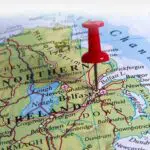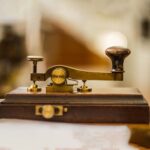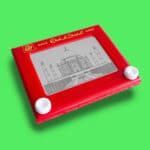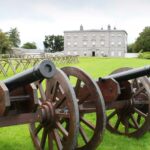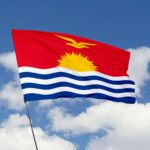The Night of Nights is celebrated annually every July 12. It commemorates when the last commercial Morse code transmission in the U.S. was sent. Many years ago messages, usually in Morse code, were transmitted by radio waves.Through the efforts of the Maritime Radio Historical Society (M.R.H.S.), West Marin’s historic Morse code radio station KPH returns to the air for a day and transmits in Morse code from 5:01 pm to midnight. Listeners wait to hear the signals of the great station once again fill their receivers. Many will join the M.R.H.S. at the receiving station at the Point Reyes National Seashore to marvel as the signals are transmitted by hand using vintage telegraph keys.
History of Night of Nights
Morse code radio stations were once scattered along the U.S. coastline, all communicating with ships at sea. Maritime mobile bands were populated with powerful stations operating from almost every country on every continent. Trade ships and passenger liners filled the air with their radiograms. These radiotelegraph operators worked tirelessly, even more so when a ship was in danger. Using the three most recognizable letters in radio, S.O.S., they knew their fellow radio operators would listen closely to hear every detail and bring help to the troubled ship. Now, these bands are mostly silent with the advent of satellite technology.On the same day that the final Morse transmission was sent, Tom Horsfall and Richard Dillman formed the Maritime Radio Historical Society (M.R.H.S.) to keep the history of maritime radio alive. They visited the K.P.H. transmit-and-receive sites in Bolinas and Point Reyes, which were miraculously still intact despite being closed for two years. The receivers were still on, maintaining a watch on the Morse calling channels. They knew then that they must restore and operate K.P.H. as a way to honor the men and women who, for 100 years, had made the profession of radio telegrapher one of honor and skill. Fortunately, they convinced the National Park Service, where the Point Reyes station site was located, to give them the go-ahead.Now, not only has K.P.H. returned to the air but so have several stations such as K.S.M., K.F.S., and K6KPH. Through the dedication of the volunteers at M.R.H.S., honoring the memory of the men and women of wireless is made possible year after year.
Night of Nights timeline
Samuel F. B. Morse, the inventor of the Morse code is born.
The first U.S. Morse code message is sent.
The International Conference on Morse code decides that the letters ‘S.O.S.’ become the standard distress signal.
The last Morse code transmission in the U.S. is aired.
Night of Nights FAQs
Why is Morse code called Morse code?
Morse code is a method used in telecommunication to encode text characters as standardized sequences of two different signal durations, called dots and dashes, or dits and dahs. Morse code is named after Samuel Morse, one of the inventors of the telegraph.
What does ‘S.O.S.’ stand for?
Nothing. The letters were chosen as an international distress signal because they were easy to transmit in Morse code: ‘S’ used three dots and ‘O’ used three dashes. Not to mention that they were easy to remember and send.
What replaced Morse code?
Until 1999, Morse code was the international standard for communication at sea. It was replaced by the Global Maritime Distress Safety System, which uses advanced technology such as satellite communication.
Night of Nights Activities
-
Go to the receiving station
Get to where the action is! Watch and listen as the long and short beeps are translated by skilled radio telegraphers into weather forecasts, press releases, and special commemorative messages to mark the day.
-
Call in
Lucky enough to be on a boat? Calling in from a ship at sea makes you feel as if the golden age of maritime radio has returned.
-
Throw a nautical-themed party
Start at 5:01 pm and ends at midnight — the same time the Morse code signal transmission is set to go on air. Dress in white with blue or red stripes. Serve some seafood and let the rum flow!
5 Fascinating Facts About The First Morse Code Message
-
The message was ‘What hath God wrought’
It was from the Bible’s Book of Numbers, 23:23, and recorded on a paper tape.
-
A girl suggested it
Credit goes to Annie Ellsworth, the young daughter of a friend of Morse.
-
It was sent from Washington to Baltimore
It traveled 40 miles from the Old Supreme Court Chamber in the U.S. Capitol to the Mount Clare Station of the Baltimore railroad.
-
It was from Morse to Alfred Vail
Morse sent it to his fellow inventor Alfred Vail, who helped him to develop American telegraphy between 1837 to 1844.
-
Date of the first message
The first message was sent on May 24, 1844.
Why We Love Night of Nights
-
It makes radio geeks happy
Anything that gets geeks to rejoice is always a good thing. Join in and see if it can convert you too!
-
It reminds us of a simpler time
It harks back to a time when traveling was romantic and receiving messages from far away filled us with wonder. Things weren’t as instant as they are today, which only served to increase the longing.
-
It keeps alive a maritime radio practice
It preserves a part of maritime radio history. Do some research and see what other wonders you can unearth about maritime history.
Night of Nights dates
| Year | Date | Day |
|---|---|---|
| 2023 | July 12 | Wednesday |
| 2024 | July 12 | Friday |
| 2025 | July 12 | Saturday |
| 2026 | July 12 | Sunday |
| 2027 | July 12 | Monday |






